The Bureau of Land Management (BLM) manages more than 245 acres of public land across the United States – nearly 12 percent of the entire country. While some land under the agency’s purview is dedicated to managing natural resources like ores and timber, the BLM also oversees more than 35 million acres of what they call “National Conservation Lands.” That includes national monuments, wilderness areas, and national scenic trails.

Pitch Your Tent at These 10 Rad West Coast BLM Camping Spots
Most of these National Conservation Lands are in the West and focused on promoting recreational opportunities, including hiking, mountain biking, rock climbing, fishing, and camping.

The BLM manages some of the country’s most beautiful destinations, like The Wave. Photo: warnsweet/Shutterstock
There are two different types of BLM camping available on those 35 million acres. The first is dispersed backcountry camping. It’s typically free of charge, as long as you aren’t near established recreational facilities (although camping may be restricted in culturally or ecologically sensitive areas). You can more or less camp anywhere on BLM land, as long as you follow a few basic rules.
The second type of BLM camping is in established campgrounds with creature comforts like water, basic restrooms, fire rings, and picnic tables. This type of BLM camping usually has a relatively modest fee of $5-15 per night.
Along the West Coast – in California, Oregon, and Washington – the BLM manages more than 31 million acres, from the Cascades to the Colorado Desert, offering a bounty of established campgrounds and dispersed camping destinations. So, for road trippers and outdoor lovers ready to get off-the-grid, here’s a shortlist of the best BLM camping on the West Coast.
BLM camping in California
Tuttle Creek Campground (Lone Pine)
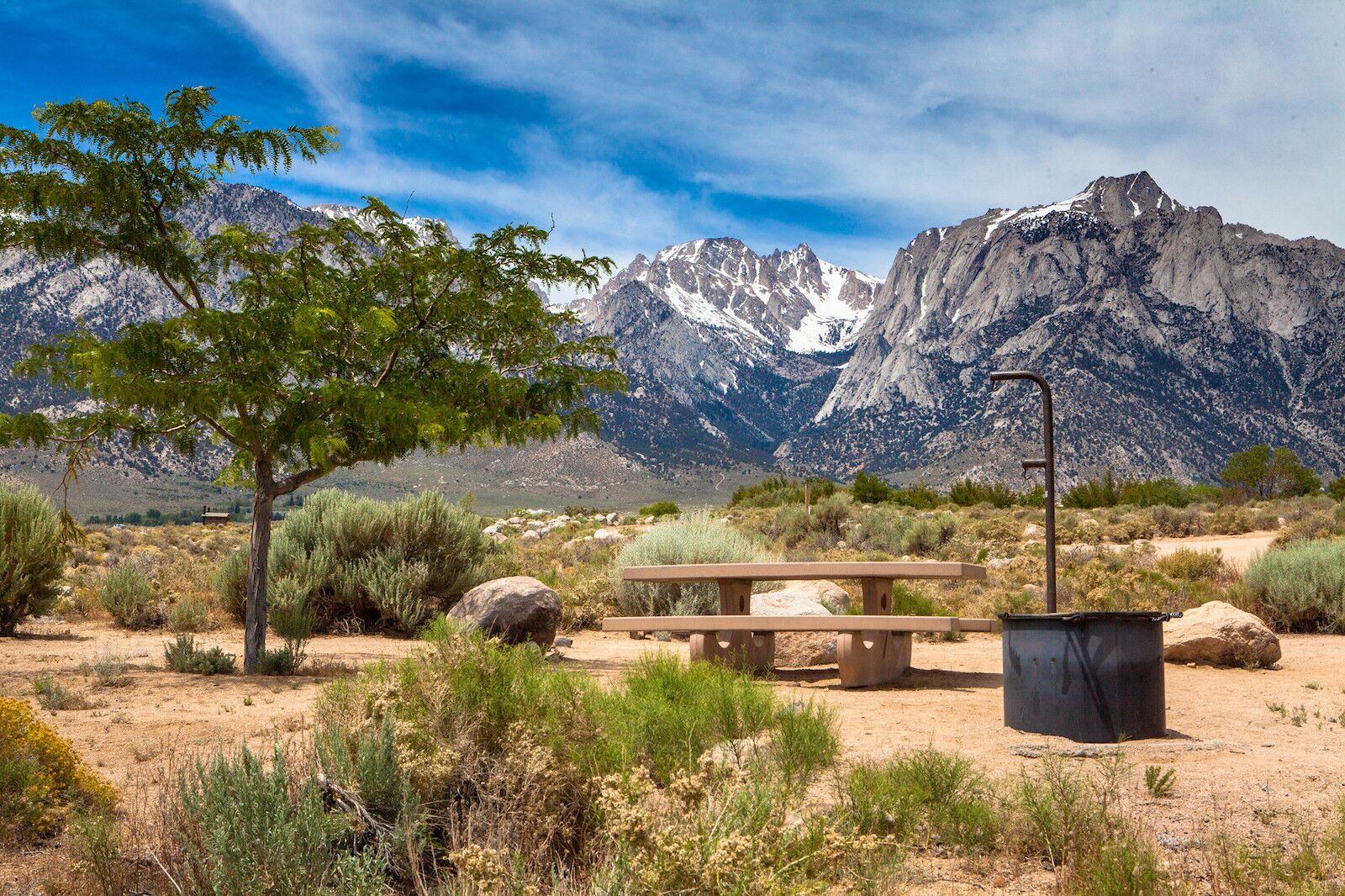
Photo: Bureau of Land Management
Though it’s overshadowed by the granite spires of 14,505-foot Mount Whitney (the highest peak in the contiguous United States), the Tuttle Creek Campground is one of the best spots for BLM camping in California. It’s tucked into the foothills of the Sierra Nevada along the crystalline waters of Tuttle Creek. A strategic staging point for climbers tackling Mount Whitney, the campground is just five miles from the pint-sized town of Lone Pine, which was a hangout for Hollywood elites during the early 1900s who would come to shoot in the cinematic landscape. If that appeals to you, stop by the Museum of Lone Pine Film History, which pays homage to the hamlet’s silver-screen history.
The campground is also less than three miles from the Alabama Hills National Scenic Area, a massive conglomeration of rust-colored rocks and arches seen in hundreds of films, including “Gladiator” and “Iron Man.”
If you snag a spot at this BLM California campsite, don’t forget to take advantage of the campground’s unobstructed sunrise and sunset views of Sierra, when rosy alpenglow illuminates the peaks.
Fees and Amenities: Open year-round, the campground offers potable water (except during winter), drop toilets, picnic tables, and fire rings. All 83 sites are available first come, first served at $5 per night. Click here for a map.
Cottonwood Campground (Boulevard)

Photo: Bureau of Land Management
At the southwestern edge of the 600,000-acre Anza Borrego State Park — the largest park in California — is the Cottonwood Campground, which serves as a gateway to the Colorado Desert.
It’s one of the best BLM campgrounds in California for adventure, with a handful of hikes beginning from the campground, including the Sombrero Peak Trail (named for a peak in the southern fringes of the Anza Borrego State Park) and the Pepperwood Trail, which threads Pepperwood Canyon on a 14-mile path to the edge of the park.
The campground is a strategically ideal place to catch the desert’s kaleidoscopic super bloom in the spring, catalyzed by the region’s diversity of flora. Within the park are plants from more than 90 plant families, including hundreds of species that produce seasonal spring flowers.
However, the campground is equally spectacular after sunset. For stargazers, the town of Borrego Springs became the world’s second International Dark Sky Community in 2009 and was certified as an International Dark Sky Park about a decade later. Stargazers can even take guided night tours to learn more about the sky above.
Fees and Amenities: Open year-round, these campsites have drop toilets, picnic tables, and fire rings. All 25 campsites are available on a first-come, first-served basis ($6 per night). Click here for a map.
Crowley Lake Campground (Mammoth Lakes)
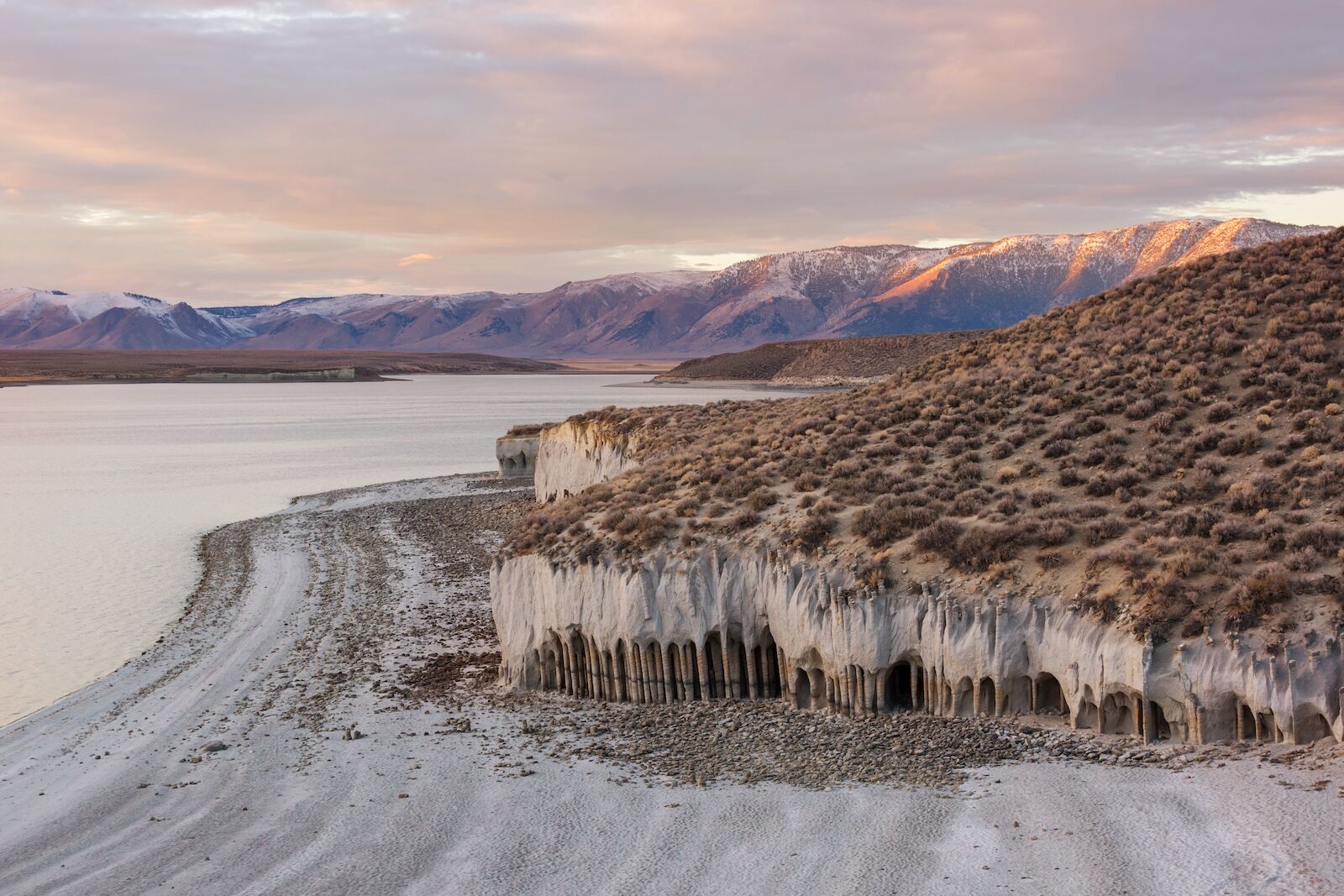
Photo: Galyna Andrushko/Shutterstock
Overshadowed by the Glass Mountains, Crowley Lake Campground provides easy access to a smorgasbord of outdoor adventures in the Eastern Sierra, as well as access to the lake’s unique column formations. About 15 miles west of the campground is Mammoth Lakes, tucked against 11,053-foot Mammoth Mountain. The aptly named resort town is perched at the edge of the lake-studded Inyo National Forest and provides plenty of creature comforts, like cafes, breweries, and outdoor outfitters.
About 30 miles to the south, the town of Bishop is a hub for climbing and bouldering in the Buttermilks and a portal to the John Muir Wilderness. But there’s no need to even leave this hip California BLM camping location if you’re an angler since the photogenic lake is heavy on resident brown and rainbow trout.
Fees and Amenities: Amenities include potable water, pit toilets, fire rings, and picnic tables. The campground is open from May to October. All 47 campsites are useable for tents or RVs on a first-come, first-served basis at $8 per night. Click here for a map.
McCabe Flat Campground (Midpines)
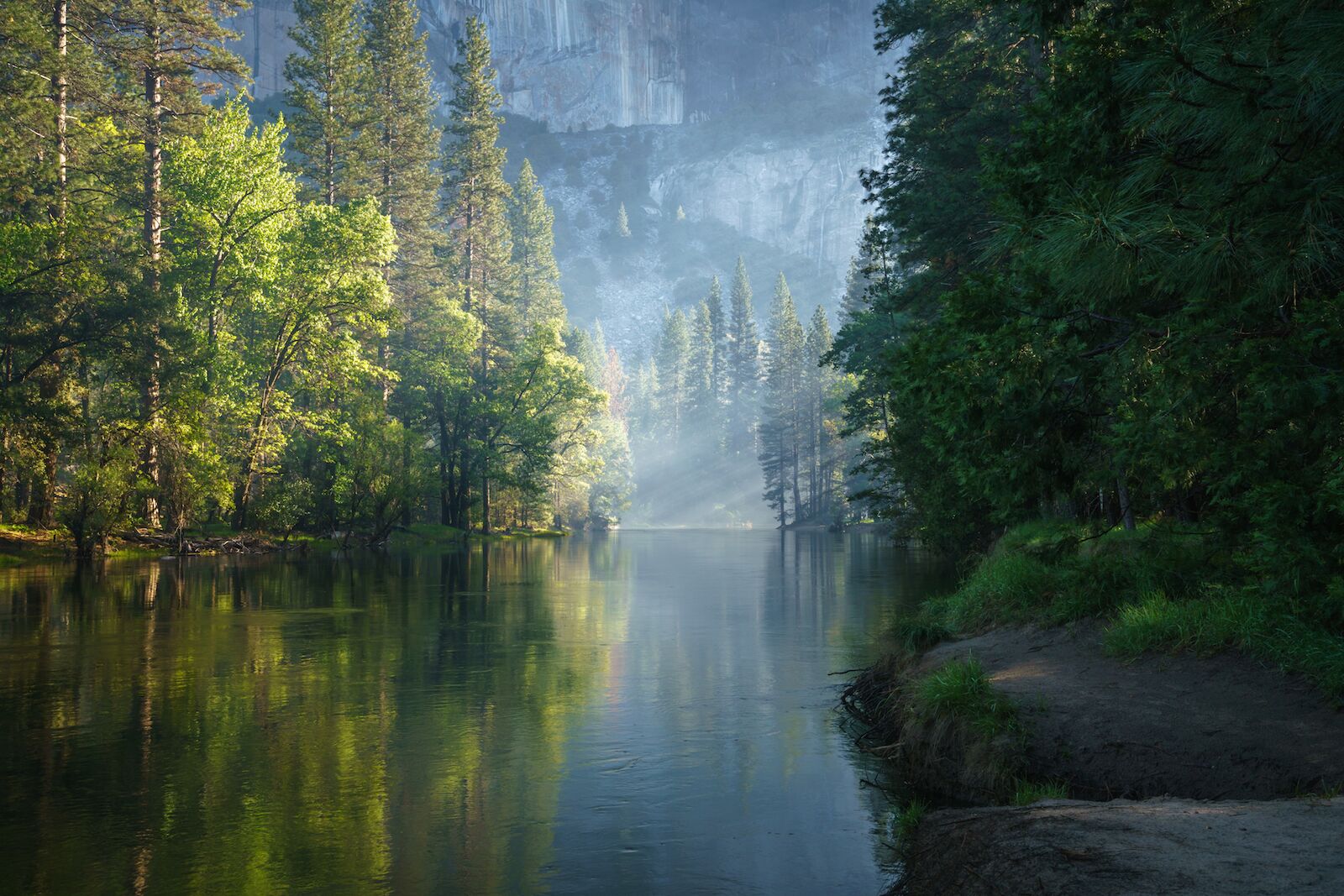
Photo: cb_travel/Shutterstock
About 30 miles west of Yosemite National Park, the McCabe Flat Campground serves up exceptional access to the Merced Wild and Scenic River for fishing or floating. The campground includes a sandy beach, and all eleven campsites are less than 200 feet from the water.
For landlubbers, the regional Merced River Trail follows the historic Yosemite Valley Railroad grade along the north side of the waterway. The Merced River also lures recreational gold miners anxious to celebrate the region’s richly entrenched mining history.
Just a few miles south in Mariposa, the California State Mining and Mineral Museum contains the largest crystallized gold nugget harvested during the state’s gold rush in the mid-1800s: a 14-pound piece dubbed the “Fricot Nugget.” It’s the best BLM camping spot in California if you want to visit Yosemite and experience the cool, under-the-radar areas around the park that most visitors skip.
Fees and Amenities: This campsite is open year-round and has only eight campsites, three of which are reachable by car (the rest are walk-in only). The campground has pit toilets, fire rings, and picnic tables, yours for only $10 a night. Keep in mind it does not have potable water. Click here for a map.
Mattole Campground (Petrolia)

Photo: Bureau of Land Management
The Mattole Campground is on northern California’s Lost Coast, a ruggedly wild stretch of Pacific Coastline buttressed by the peaks of the Kings Range. It’s a portal to some of the remote swathes of the state and one of the most challenging hikes in California.
This epic California BLM camping location is nestled between the Pacific Ocean and the Mattole River. It serves as the northern terminus for the Lost Coast Trail – a 35-mile wilderness traverse extending from Sinkhole Wilderness State Park to the Mattole River (although the more popular section is the 24.6-mile coastal stretch from the Mattole River to Shelter Cove).
You’ll also want to visit the Punta Gorda Lighthouse, a remote outpost used from 1912 to 1951 to help prevent the many shipwrecks occurring along the rugged ribbon of coastline. Mountain bikers should head to the Paradise Royale Area about 35 miles south of the BLM campsite, with more than 20 miles of trails crafted just for mountain bikers.
Fees and Amenities: Open year-round, the compact campground offers drop toilets and campsites with fire rings and picnic tables. You can’t make reservations, and sites are $8 per night. Click here for a map.
BLM camping in Oregon
Tyee Campground (Westlake)

Photo: Tom Reichner</>/Shutterstock
On the shores of the Umpqua River, about 50 miles inland from the Pacific Ocean, the Tyee Campground treats campers to a stunning sampling of southern Oregon’s natural assets. About an hour north of this stunning BLM camping area in Oregon is the Dunes Day Use Area, which preserves part of an 80-mile chain of towering sand dunes paralleling the Pacific Ocean. And just 15 miles north of the campground is Elkton and the Elkton Oregon AVA, known for pinot noirs.
But aspiring wildlife photographers should head to the Dean Creek Elk Viewing Area, about 45 miles west of the campground. It’s the best spot to see the region’s hulking Roosevelt elk, North America’s largest elk species. The wildlife viewing area features several strategic viewing spots spread along Highway 38.
Fees and Amenities: This is one of the few BLM camping sites in Oregon that requires reservations at $14 per night. All 15 sites have fire pits and picnic tables and the site has restrooms and potable water. Click here for a map and here for reservations.
Green Mountain Campground (Silver Lake)
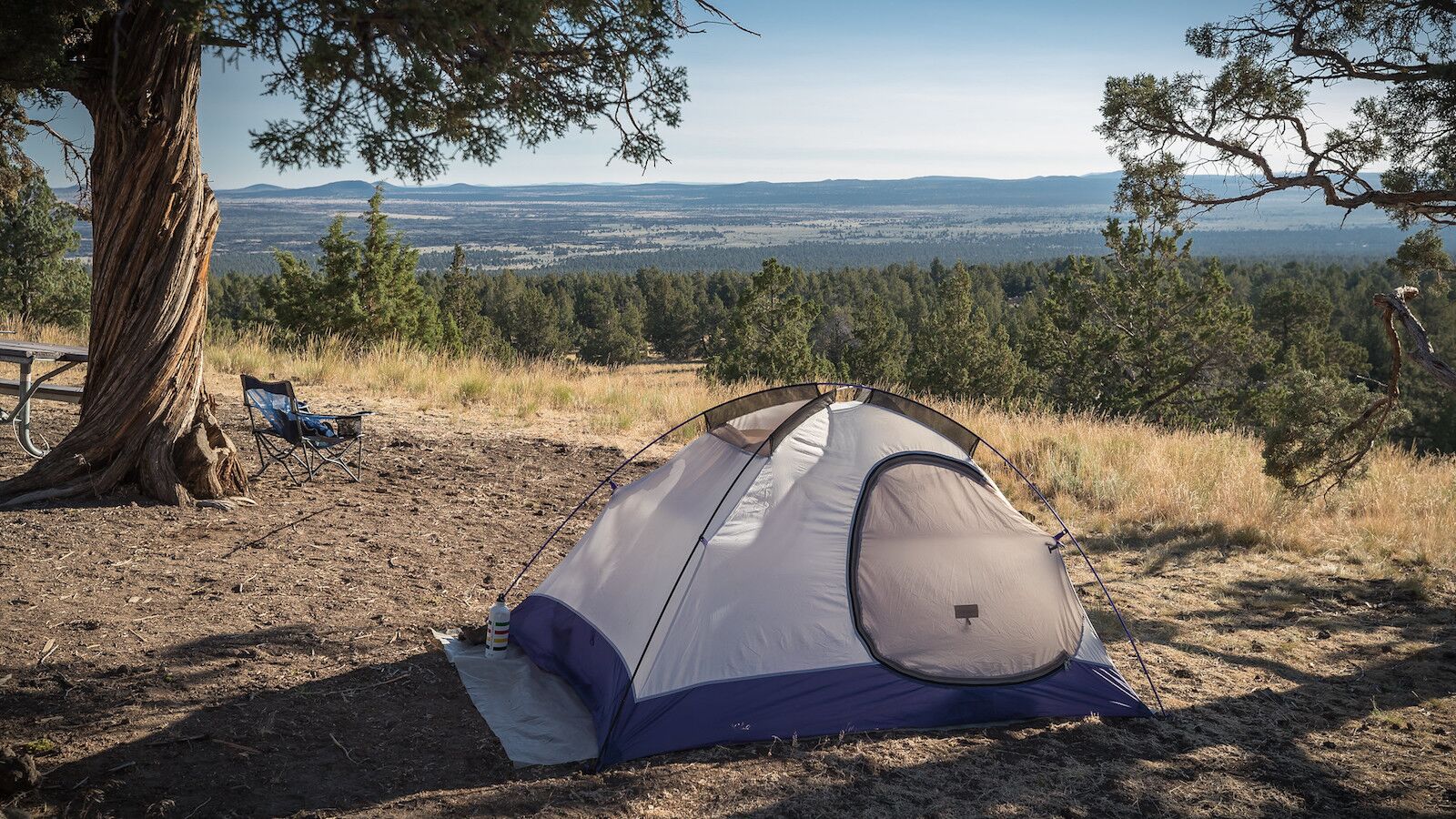
Photo: Bureau of Land Management
A gateway to the cache of otherworldly geological wonders in Oregon’s Christmas Valley, the Green Mountain Campground is a fascinating place to unplug and one of the best places for BLM camping in Oregon for hikers.
Crack-in-the- Ground (an awesome hike inside a volcanic fissure) is less than six miles south of the campground; it’s part of the very cool Four Craters Lava Bed Wilderness Study Area. The ancient volcanic fissure was sculpted more than 1,000 years ago during a series of violent eruptions and preserved by the arid landscape. Now, the geological anomaly is a sublime hiking destination, best showcased on Crack-in-the Ground’s 1.7-mile loop.
About 25 miles east of this Oregon BLM campground is the Christmas Valley Sand Dune Area, harboring the largest swath of inland dunes in the entire Pacific Northwest. It preserves more than 10,000 acres of shifting sands. But before you hike the massive dunes, consider hiking the campsite’s adjacent Green Mountain Fire Lookout first. An outpost in the Christmas Valley since the early 1960s and later updated in 2011, the lookout tower is still actively staffed from June through October.
Fees and Amenities: This year-round BLM camping site in Oregon has vault toilets and a fire ring and picnic table at each site. It only has six spots, all of which are first come, first served (and free). It’s a remote campground accessible only by dirt road, so 4WD vehicles are the best bet. Click here for a map.
Chimney Rock Campground (Prineville)
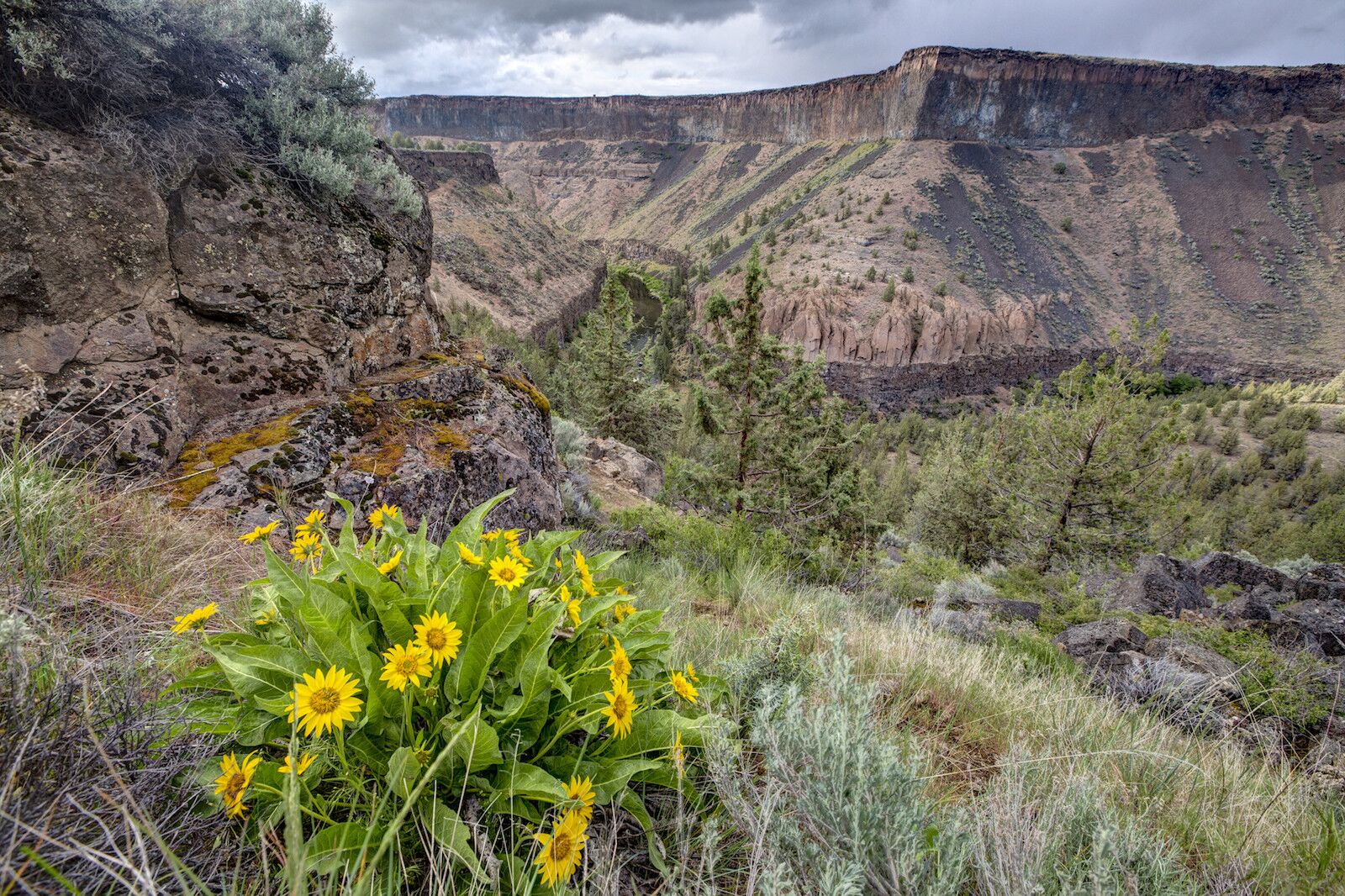
Photo: Bureau of Land Management
Offering a photogenic snapshot of central Oregon’s high desert region near the Lower Crooked River Backcountry Byway, the Chimney Rock Campground sits in the shadow of eponymous Chimney Rock. It’s a basalt butte towering above the Lower Crooked Wild and Scenic River and serves up panoramic summit views of the Crooked River Canyon. Fortunately, the Oregon BLM camping site is near the start for the relatively easy 2.6-mile hike on the Chimney Rock Trail.
Cyclists will appreciate that this BLM camping location is on the Crooked River Scenic Bikeway, a cliff-edged stretch of roadway extending from the historic frontier town of Prineville to the Big Bend Campground. It was designated as an Oregon Scenic Bikeways in 2018. And, for more leisurely getaways, the riverside campground also offers plenty of places to cast for rainbow and redband trout.
Fees and Amenities:: This Oregon BLM campsite is open year-round. In addition to toilets and water, there’s a large fishing deck for guest use. All 16 campsites are first come, first served ($8 per night, $2 per vehicle for extra vehicles). Click here for a map.
Susan Creek Campground (Roseburg)

Photo: btdigital/Shutterstock
Tucked along the North Umpqua Wild and Scenic River at the edge of the Cascade Range in southern Oregon, the Susan Creek Campground is a multi-sport adventure hub with enough amenities to entice reluctant campers.
Of course, with easy river access, seasonally spawning salmon and steelhead trout are the main attractions for anglers in the spring and fall. For hikers, the 1.5-mile Emerald Trail links this BLM camping destination to the Tioga Bridge, a pedestrian crossing to the North Umpqua River Day-Use Area.
Nearby is Susan Creek Falls, a 50-foot-tall cascade accessed via a 1.6-mile, out-and-back hike. For a longer excursion, there’s the North Umpqua Trail, a 79-mile regional route open to hikers and mountain bikers. Road trippers will appreciate that this campground is along the northern portion of the Rogue-Umpqua National Scenic Byway, a 172-mile scenic route paralleling the North Umpqua and Upper Rogue Wild and Scenic River. This is also an ideal BLM campsite if you want to visit Crater Lake National Park as it’s only about 50 miles to the entrance.
Fees and Amenities: Amenities include potable water, restrooms with flushable toilets, tent pads, picnic tables, and fire rings with grills. Half of the campground’s 30 sites can be reserved in advance ($20 per night for a non-electric campsite). The campground is only open from mid-April to late October. Click here for a map and here for reservations.
BLM camping in Washington
Umtanum Campground (Ellensburg)
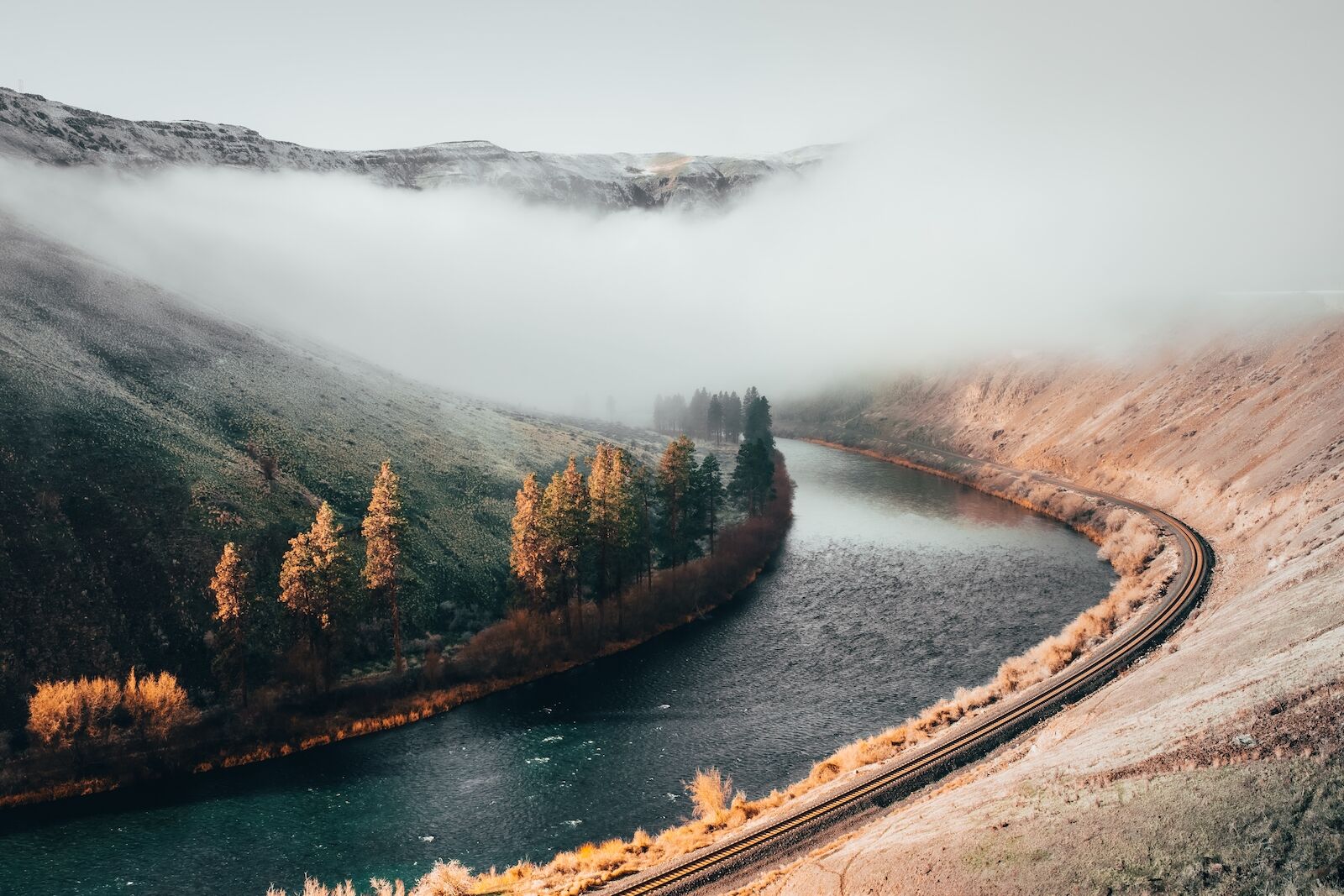
Photo: Nestor Salgado/Shutterstock
Washington’s Umtanum BLM campground is one of four different BLM campgrounds in the Yakima River Canyon, along a stretch of flatwater made for lazy float trips. Buttressed by basalt cliffs and pillowy hills peppered with ponderosa pine, the Washington BLM campground makes a strategic basecamp for a multi-day camping trip on the Yakima River.
But, there are plenty of reasons to pitch your tent and stay put at this highly-regarded BLM camping location. Bird watchers will appreciate that the canyon is an Audubon Important Bird Area, harboring a diversity of raptors, including golden eagles, great horned owls, and prairie falcons. And anglers, never fear: there’s a ribbon of water sluicing through the canyon, part of a 75-mile stretch of trout stream.
Fees and Amenities: Open year-round, amenities include drop toilets, fire rings, and picnic tables. You can make reservations for stays May through September, but it’s walk-up-only from October to April. Click here for a map and here for reservations.